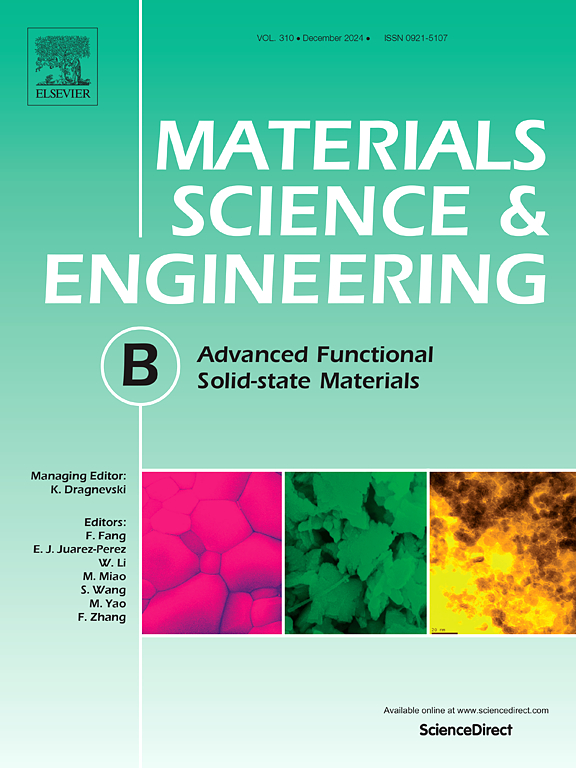Synthesis of Z-scheme heterojunction photocatalysts CuO/Cu2O/Cu@Co3O4 with enriched oxygen vacancies for efficient degradation of tetracycline antibiotics
IF 3.9
3区 材料科学
Q2 MATERIALS SCIENCE, MULTIDISCIPLINARY
引用次数: 0
Abstract
The mesoporous Co3O4 nanosheets have been employed as a promising supporting material to prepare OVX-CuO/Cu2O/Cu@Co3O4 Z-type photocatalysts. The strategic modification of Co3O4 nanosheets with CuO/Cu2O/Cu nanoparticles, combined with NaBH4 treatment, led to the formation of a Z-scheme heterostructure and the generation of abundant oxygen vacancies (OVs). These modifications were essential for facilitating the rapid diffusion of photo-induced electron-hole pairs and enhancing visible-light absorption, thereby significantly improving the photocatalytic efficiency of OV1.2-CuO/Cu2O/Cu@Co3O4, which exhibited the highest catalytic efficiency and exceptional stability for Tetracycline (TC) removal, achieving a rate constant of 0.359 min−1 and a 95 % removal efficiency within 10 min. The investigation, including ESR tests and trapping experiments, revealed that •OH and •O2− are crucial components in the photocatalytic process. This work shed light on the design and development of highly active photocatalysts for environmental remediation applications.

求助全文
约1分钟内获得全文
求助全文
来源期刊

Materials Science and Engineering: B
工程技术-材料科学:综合
CiteScore
5.60
自引率
2.80%
发文量
481
审稿时长
3.5 months
期刊介绍:
The journal provides an international medium for the publication of theoretical and experimental studies and reviews related to the electronic, electrochemical, ionic, magnetic, optical, and biosensing properties of solid state materials in bulk, thin film and particulate forms. Papers dealing with synthesis, processing, characterization, structure, physical properties and computational aspects of nano-crystalline, crystalline, amorphous and glassy forms of ceramics, semiconductors, layered insertion compounds, low-dimensional compounds and systems, fast-ion conductors, polymers and dielectrics are viewed as suitable for publication. Articles focused on nano-structured aspects of these advanced solid-state materials will also be considered suitable.
 求助内容:
求助内容: 应助结果提醒方式:
应助结果提醒方式:


